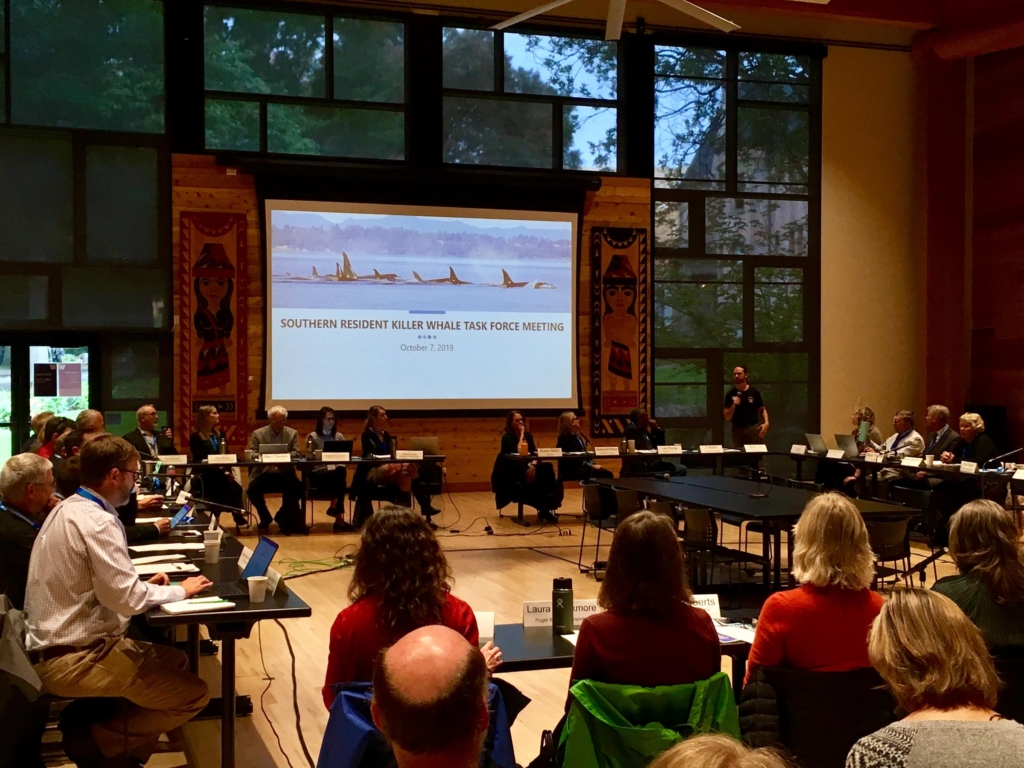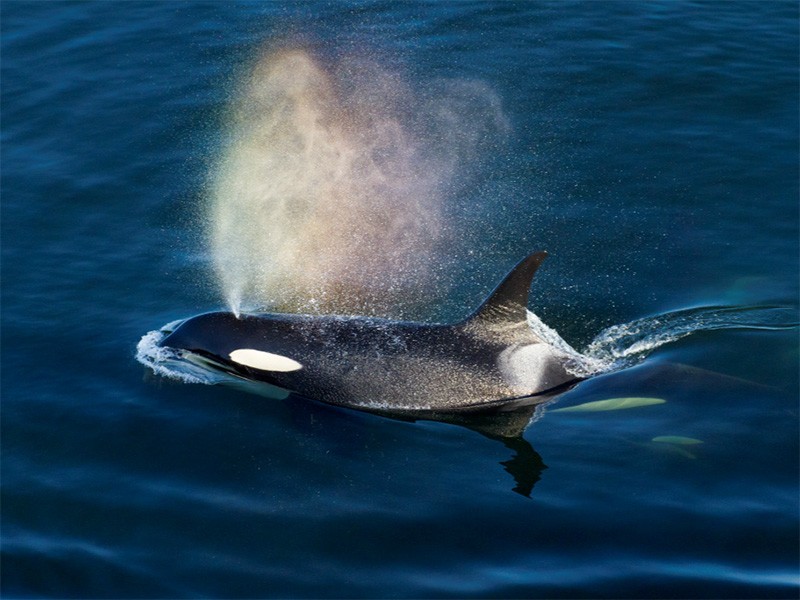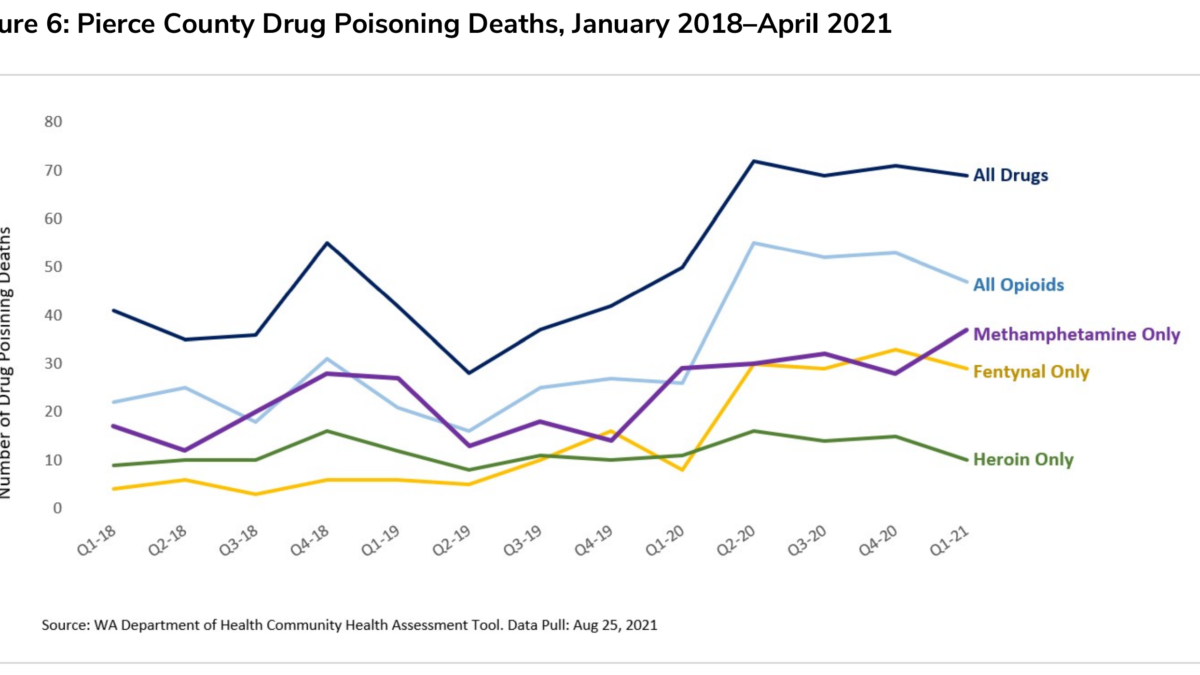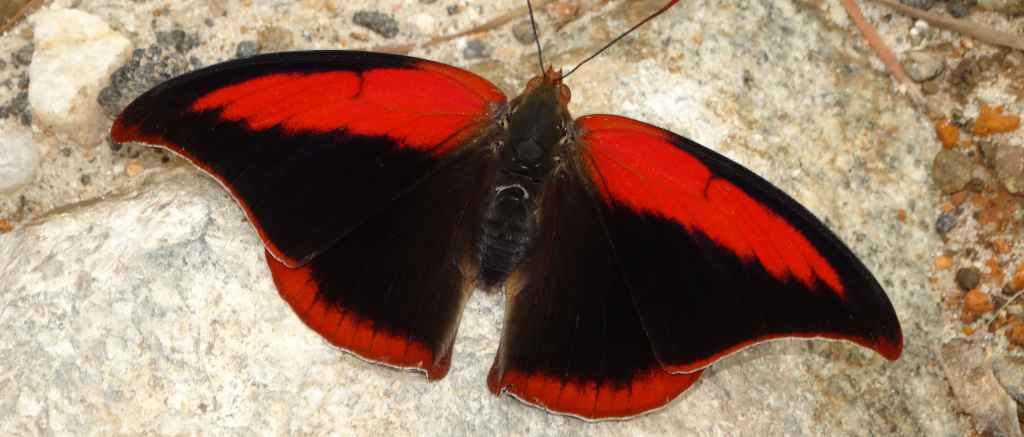Orca task force adds 13 recommendations at final meeting as “biological extinction” looms

By Bellamy Pailthorp
8 October 2019
(KNKX) – Their goal is clear: to prevent Puget Sound’s iconic Southern Resident killer whales from going extinct. Solving that problem is anything but simple.
The task force convened by Gov. Jay Inslee to save the orcas added 13 new recommendations this week, at its final meeting. The additions to the group’s so-called “Year 2 Report” cover more than 100 pages, adding climate change and population growth to the list of issues complicating orca recovery.
The governor’s task force – created after an executive order from Inslee in March 2018 – is comprised of several dozen experts. They represent everything from salmon recovery groups to commercial fishing interests to local agencies, tribes, marine traffic and whale watch tour operators.
They met 10 times at venues across the state, discussing anything that might touch the life of an endangered orca.
There were some rifts along the way: a proposed moratorium on whale watching that was ultimately rejected by lawmakers; conflicts about immediate removal of the Lower Snake River dams.
Despite all that, the group wrapped up the work harmoniously on Monday at the Intellectual House in Seattle.
The task force identified pressure from population growth in the Puget Sound region as one of the less obvious, yet hardest, problems to solve. Contaminants in the runoff from cars, roads and developments that impede salmon runs have led to the loss of fish habitat, despite millions spent on recovering it.
“We’ve had laws on the books to protect the environment for decades now. And our attempt to get to no net loss simply isn’t working,” said Will Hall, Shoreline mayor and the only city representative on the task force. […]
None of this is moving fast enough for orca demographer Ken Balcomb, senior scientist with the Center for Whale Research, who started studying and photo-identifying the local orca population long before most others on the task force.
Balcomb opted not to attend the final meeting. He says the end of the line for Puget Sound’s iconic killer whales is closer than most people think.
“Biological extinction – lack of reproduction – is almost there now. If we go at this rate, we have at most, what’s left of this reproductive generation,” Balcomb said. “Ten or twelve years and then (they’ll) be biologically extinct.”
Balcomb says the task force should have taken bold action to urge removal of four dams on the Lower Snake River, to make more Chinook salmon available. Instead, a new round of discussions is starting, about whether they can be removed at all. [more]
Orca task force adds 13 recommendations at final meeting as ‘biological extinction’ looms



